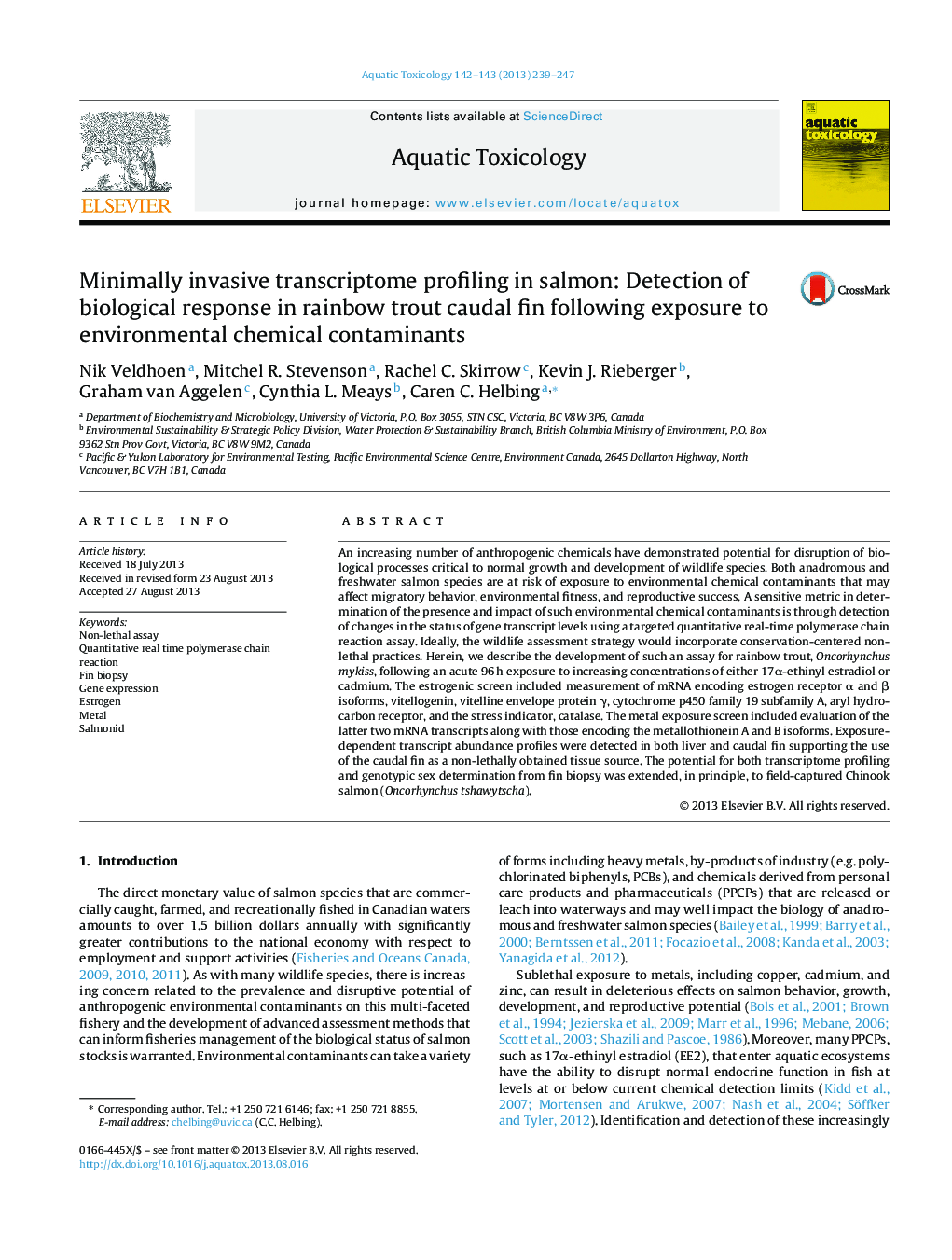| کد مقاله | کد نشریه | سال انتشار | مقاله انگلیسی | نسخه تمام متن |
|---|---|---|---|---|
| 4529441 | 1625961 | 2013 | 9 صفحه PDF | دانلود رایگان |

• A minimally-invasive tail fin biopsy assay was developed for use in fish.
• Quantitative real time polymerase reaction provided gene expression readout.
• Results were comparable to classical liver tissue responses.
• The approach was used on two salmonid species and can be coupled with genomic sex determination using an additional biopsy for maximal information.
An increasing number of anthropogenic chemicals have demonstrated potential for disruption of biological processes critical to normal growth and development of wildlife species. Both anadromous and freshwater salmon species are at risk of exposure to environmental chemical contaminants that may affect migratory behavior, environmental fitness, and reproductive success. A sensitive metric in determination of the presence and impact of such environmental chemical contaminants is through detection of changes in the status of gene transcript levels using a targeted quantitative real-time polymerase chain reaction assay. Ideally, the wildlife assessment strategy would incorporate conservation-centered non-lethal practices. Herein, we describe the development of such an assay for rainbow trout, Oncorhynchus mykiss, following an acute 96 h exposure to increasing concentrations of either 17α-ethinyl estradiol or cadmium. The estrogenic screen included measurement of mRNA encoding estrogen receptor α and β isoforms, vitellogenin, vitelline envelope protein γ, cytochrome p450 family 19 subfamily A, aryl hydrocarbon receptor, and the stress indicator, catalase. The metal exposure screen included evaluation of the latter two mRNA transcripts along with those encoding the metallothionein A and B isoforms. Exposure-dependent transcript abundance profiles were detected in both liver and caudal fin supporting the use of the caudal fin as a non-lethally obtained tissue source. The potential for both transcriptome profiling and genotypic sex determination from fin biopsy was extended, in principle, to field-captured Chinook salmon (Oncorhynchus tshawytscha).
Journal: Aquatic Toxicology - Volumes 142–143, 15 October 2013, Pages 239–247